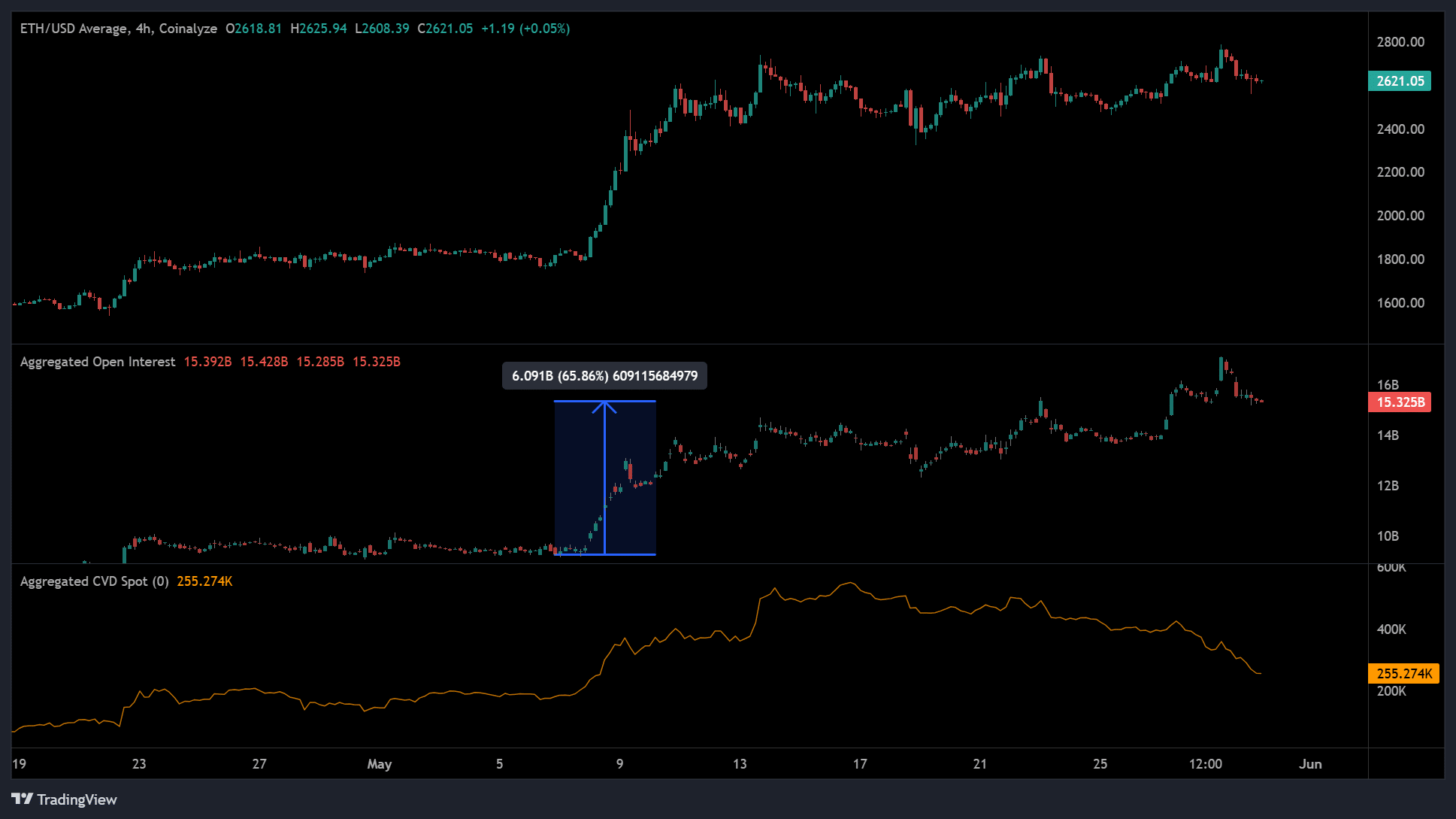| COINOTAG recommends • Exchange signup |
| 💹 Trade with pro tools |
| Fast execution, robust charts, clean risk controls. |
| 👉 Open account → |
| COINOTAG recommends • Exchange signup |
| 🚀 Smooth orders, clear control |
| Advanced order types and market depth in one view. |
| 👉 Create account → |
| COINOTAG recommends • Exchange signup |
| 📈 Clarity in volatile markets |
| Plan entries & exits, manage positions with discipline. |
| 👉 Sign up → |
| COINOTAG recommends • Exchange signup |
| ⚡ Speed, depth, reliability |
| Execute confidently when timing matters. |
| 👉 Open account → |
| COINOTAG recommends • Exchange signup |
| 🧭 A focused workflow for traders |
| Alerts, watchlists, and a repeatable process. |
| 👉 Get started → |
| COINOTAG recommends • Exchange signup |
| ✅ Data‑driven decisions |
| Focus on process—not noise. |
| 👉 Sign up → |
-
The latest developments in the U.S. Ethereum ETF landscape indicate significant progress, particularly in staking regulations, which could reshape investor strategies.
-
With the SEC’s recent guidance, the crypto community is hopeful that an ETH ETF approval is closer than ever, offering a new avenue for institutional involvement.
-
Rebecca Rettig from Jito Labs emphasized that the SEC’s clarification marks a transformative moment for non-custodial staking services, underscoring the evolving regulatory landscape.
This article explores the implications of recent SEC clarity on Ethereum staking, focusing on the potential for ETH ETF approvals and the evolving market conditions.
Potential Impact of SEC’s Staking Clarification
The SEC’s new stance on staking provisions has opened doors for various platforms aiming to offer staking within U.S. markets. Notably, systems operating on Proof-of-Stake (PoS), including prominent networks like Ethereum, have gained validation as non-securities.
Total staked ETH continues to reflect a healthy growth trajectory, rising from 33 million to over 34 million recently, with staking yields averaging 3%. This upward trend in participation signals robust interest among investors can suggest that an ETH ETF could capitalize on this momentum.
The Regulatory Shift: What It Means for Investors
The stark contrast between the SEC’s previous stance and its current approach illustrates an evolving regulatory environment that favors staking activities. For instance, the SEC previously fined Kraken for offering unregistered staking services, while the latest approach paves the way for compliant growth in the sector.
| COINOTAG recommends • Professional traders group |
| 💎 Join a professional trading community |
| Work with senior traders, research‑backed setups, and risk‑first frameworks. |
| 👉 Join the group → |
| COINOTAG recommends • Professional traders group |
| 📊 Transparent performance, real process |
| Spot strategies with documented months of triple‑digit runs during strong trends; futures plans use defined R:R and sizing. |
| 👉 Get access → |
| COINOTAG recommends • Professional traders group |
| 🧭 Research → Plan → Execute |
| Daily levels, watchlists, and post‑trade reviews to build consistency. |
| 👉 Join now → |
| COINOTAG recommends • Professional traders group |
| 🛡️ Risk comes first |
| Sizing methods, invalidation rules, and R‑multiples baked into every plan. |
| 👉 Start today → |
| COINOTAG recommends • Professional traders group |
| 🧠 Learn the “why” behind each trade |
| Live breakdowns, playbooks, and framework‑first education. |
| 👉 Join the group → |
| COINOTAG recommends • Professional traders group |
| 🚀 Insider • APEX • INNER CIRCLE |
| Choose the depth you need—tools, coaching, and member rooms. |
| 👉 Explore tiers → |
As noted by ETF Store’s Nate Geraci, clarity from the IRS on how staking revenues are taxed within a grantor trust structure remains a pivotal element for the approval of ETH ETFs. This is crucial for asset managers looking to promote products that can provide staking yields alongside price appreciation.
Market Reactions and Future Outlook
Despite positive regulatory updates, Ethereum’s market performance has not reflected the optimism surrounding ETF approval. Recent data indicates that the average investor in BlackRock and Fidelity Ethereum ETFs faces substantial unrealized losses, currently averaging around -21%. This sentiment reflects a broader concern regarding market sentiment and liquidity.
| COINOTAG recommends • Exchange signup |
| 📈 Clear interface, precise orders |
| Sharp entries & exits with actionable alerts. |
| 👉 Create free account → |
| COINOTAG recommends • Exchange signup |
| 🧠 Smarter tools. Better decisions. |
| Depth analytics and risk features in one view. |
| 👉 Sign up → |
| COINOTAG recommends • Exchange signup |
| 🎯 Take control of entries & exits |
| Set alerts, define stops, execute consistently. |
| 👉 Open account → |
| COINOTAG recommends • Exchange signup |
| 🛠️ From idea to execution |
| Turn setups into plans with practical order types. |
| 👉 Join now → |
| COINOTAG recommends • Exchange signup |
| 📋 Trade your plan |
| Watchlists and routing that support focus. |
| 👉 Get started → |
| COINOTAG recommends • Exchange signup |
| 📊 Precision without the noise |
| Data‑first workflows for active traders. |
| 👉 Sign up → |
While speculative interest remains high—as evidenced by elevated Open Interest (OI) levels—unless spot market demand rebounds, the prospects for a sustained rally may be challenged. Market analysts suggest that tightening liquidity conditions could heighten risks for leveraged positions going forward.

| COINOTAG recommends • Traders club |
| ⚡ Futures with discipline |
| Defined R:R, pre‑set invalidation, execution checklists. |
| 👉 Join the club → |
| COINOTAG recommends • Traders club |
| 🎯 Spot strategies that compound |
| Momentum & accumulation frameworks managed with clear risk. |
| 👉 Get access → |
| COINOTAG recommends • Traders club |
| 🏛️ APEX tier for serious traders |
| Deep dives, analyst Q&A, and accountability sprints. |
| 👉 Explore APEX → |
| COINOTAG recommends • Traders club |
| 📈 Real‑time market structure |
| Key levels, liquidity zones, and actionable context. |
| 👉 Join now → |
| COINOTAG recommends • Traders club |
| 🔔 Smart alerts, not noise |
| Context‑rich notifications tied to plans and risk—never hype. |
| 👉 Get access → |
| COINOTAG recommends • Traders club |
| 🤝 Peer review & coaching |
| Hands‑on feedback that sharpens execution and risk control. |
| 👉 Join the club → |
Source: Coinalyze
Conclusion
In summary, while the SEC’s latest guidance provides much-needed clarity for Ethereum staking, the market’s reaction remains cautious. Staking could present a new avenue for ETF holders if approved, allowing them to benefit without direct exposure to staking risks. Continued scrutiny from the IRS and further developments in market demand will ultimately shape the future landscape for Ethereum ETFs.
| COINOTAG recommends • Members‑only research |
| 📌 Curated setups, clearly explained |
| Entry, invalidation, targets, and R:R defined before execution. |
| 👉 Get access → |
| COINOTAG recommends • Members‑only research |
| 🧠 Data‑led decision making |
| Technical + flow + context synthesized into actionable plans. |
| 👉 Join now → |
| COINOTAG recommends • Members‑only research |
| 🧱 Consistency over hype |
| Repeatable rules, realistic expectations, and a calmer mindset. |
| 👉 Get access → |
| COINOTAG recommends • Members‑only research |
| 🕒 Patience is an edge |
| Wait for confirmation and manage risk with checklists. |
| 👉 Join now → |
| COINOTAG recommends • Members‑only research |
| 💼 Professional mentorship |
| Guidance from seasoned traders and structured feedback loops. |
| 👉 Get access → |
| COINOTAG recommends • Members‑only research |
| 🧮 Track • Review • Improve |
| Documented PnL tracking and post‑mortems to accelerate learning. |
| 👉 Join now → |








